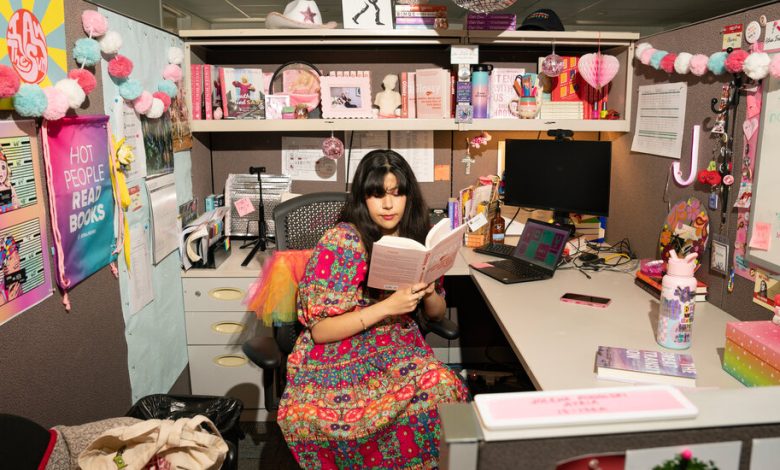As Office Workers Make Their Return, So Does the Lowly Cubicle

Among office designers and architects, cubicles are rarely mentioned. The once-ubiquitous fixture, so popular in the 1980s and ’90s, has become vilified as a sign of the dehumanization of the work force. Design experts today say cubicles are a “hard no.”
And yet cubicles, like scrunchies, are back, spurred by demand from employers and employees alike.
“I frankly thought the cube market was dying,” said Brian Silverberg, who sells refurbished and used office furniture with his brother, Mark, in their store, the Furniture X-Change in North Brunswick, N.J. “We have sold more cubes in the last three years than in the five years before,” he said, adding that 2024 would be “bigger than this year.”
Covid-19 was an amplifier of a trend that preceded the pandemic. But as workers returned to the office after months of working at home, quiet spaces became more important, said Janet Pogue McLaurin of Gensler. “We had seen a drop in effectiveness because of noise interruptions, disruptions and a general lack of privacy,” she said.
Global demand has pushed cubicles and partitions to a $6.3 billion market, which is expected to grow over the next five years to $8.3 billion, according to a 2022 report from Business Research Insights, a market analysis firm.
Furniture manufacturers had already recognized that workers wanted some privacy despite the tendency of employers to value collaborative areas more highly than individual work spaces.
We are having trouble retrieving the article content.
Please enable JavaScript in your browser settings.
Thank you for your patience while we verify access. If you are in Reader mode please exit and log into your Times account, or subscribe for all of The Times.
Thank you for your patience while we verify access.
Already a subscriber? Log in.
Want all of The Times? Subscribe.
